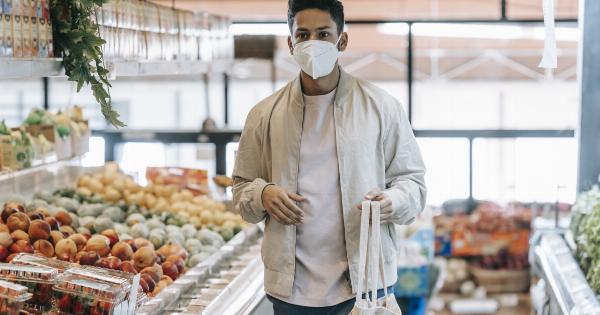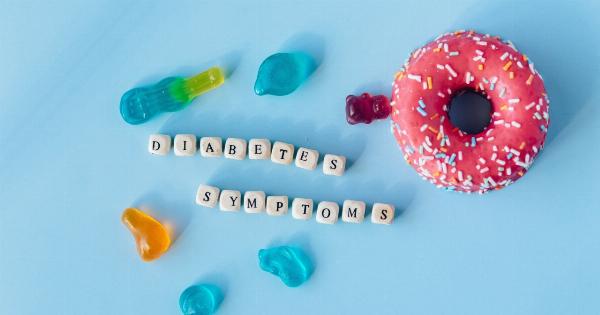Food poisoning is a condition that occurs when you consume contaminated food or beverages. It is a common problem worldwide, affecting millions of people each year.
The symptoms of food poisoning can vary depending on the cause, and they typically appear within a few hours to a few days after consuming the contaminated food.
Bacterial Food Poisoning
Bacterial food poisoning is one of the most common types of food poisoning. It is caused by the ingestion of food contaminated with bacteria, such as Salmonella, E. coli, or Campylobacter.
The symptoms of bacterial food poisoning usually appear within 1 to 3 days after consuming the contaminated food.
Common symptoms of bacterial food poisoning include nausea, vomiting, diarrhea, abdominal pain, and fever. These symptoms can range from mild to severe, depending on the type and amount of bacteria ingested.
In some cases, the symptoms may be accompanied by blood in the stool.
It is important to note that the onset of symptoms can vary depending on the individual’s immune system and the amount of bacteria ingested.
Some people may develop symptoms within a few hours, while others may experience a longer incubation period.
Viral Food Poisoning
Viral food poisoning is another common type of food poisoning. It is caused by the ingestion of food contaminated with viruses, such as norovirus or rotavirus.
The symptoms of viral food poisoning usually appear within 1 to 2 days after consuming the contaminated food.
The symptoms of viral food poisoning are similar to those of bacterial food poisoning and may include nausea, vomiting, diarrhea, abdominal pain, and fever.
However, viral food poisoning is often characterized by a rapid onset of symptoms, with sudden vomiting being the most common initial symptom.
Unlike bacterial food poisoning, viral food poisoning is not usually accompanied by blood in the stool. The duration of symptoms can vary, but most people recover within a few days to a week.
Parasitic Food Poisoning
Parasitic food poisoning is less common than bacterial or viral food poisoning but can still occur. It is caused by the ingestion of food contaminated with parasites, such as Giardia or Cryptosporidium.
The symptoms of parasitic food poisoning typically appear within 1 to 2 weeks after consuming the contaminated food.
The symptoms of parasitic food poisoning can include diarrhea, abdominal pain, bloating, and weight loss. In some cases, the symptoms may last for several weeks or even months if left untreated.
It is important to seek medical attention if you suspect you have parasitic food poisoning.
Mushroom Poisoning
Mushroom poisoning is a type of food poisoning that occurs when you consume toxic mushrooms. The symptoms of mushroom poisoning can vary depending on the type of mushroom ingested and can appear within a few hours to several days after consumption.
Common symptoms of mushroom poisoning include nausea, vomiting, abdominal pain, diarrhea, sweating, and hallucinations. In severe cases, mushroom poisoning can cause liver or kidney damage, leading to life-threatening complications.
If you suspect you have consumed toxic mushrooms, it is crucial to seek immediate medical attention. Do not induce vomiting unless instructed by a healthcare professional.
Chemical Food Poisoning
Chemical food poisoning can occur when you consume food or beverages contaminated with harmful chemicals, such as pesticides or heavy metals. The symptoms of chemical food poisoning can vary depending on the type and amount of chemical ingested.
Common symptoms of chemical food poisoning include nausea, vomiting, abdominal pain, headache, dizziness, and confusion. In severe cases, chemical food poisoning can cause organ damage and long-term health effects.
If you suspect you have consumed chemically-contaminated food or beverages, it is important to seek medical attention and inform your healthcare provider about the potential exposure.
Allergic Reaction
An allergic reaction to food can mimic the symptoms of food poisoning. It occurs when your immune system overreacts to a specific food allergen, such as peanuts, shellfish, or dairy products.
The symptoms of an allergic reaction can appear within minutes to hours after consuming the allergenic food.
Common symptoms of an allergic reaction include hives, itching, swelling of the lips or tongue, difficulty breathing, and dizziness.
In severe cases, an allergic reaction can lead to anaphylaxis, a life-threatening condition that requires immediate medical attention.
Pregnancy and Food Poisoning
Pregnant women are more susceptible to food poisoning due to changes in their immune system and the risk of harm to the developing fetus.
The symptoms of food poisoning during pregnancy are similar to those in non-pregnant individuals and can vary depending on the cause.
It is important for pregnant women to seek medical attention if they suspect food poisoning to ensure the well-being of both themselves and their unborn child.
Prevention and Treatment
Preventing food poisoning is crucial to maintaining good health.
You can reduce the risk of contamination by practicing proper food safety measures, such as washing hands and utensils, cooking food thoroughly, and avoiding cross-contamination between raw and cooked foods.
If you develop symptoms of food poisoning, it is essential to stay hydrated and rest. Most cases of food poisoning resolve on their own within a few days. However, severe cases may require medical treatment, such as intravenous fluids or antibiotics.
Conclusion
The symptoms of food poisoning can vary depending on the cause and typically appear within a few hours to a few days after consuming contaminated food.
Bacterial, viral, and parasitic food poisoning have different incubation periods and associated symptoms.
It is important to seek medical attention if you suspect food poisoning, particularly if symptoms are severe, prolonged, or accompanied by other concerning signs.
Prevention through proper food handling and hygiene is crucial to reduce the risk of food poisoning.


























